Introduction

I already reviewed a few of Miyazaki Sadayasu’s lenses but I had yet to get my hands on his MS-Optics 35mm 1.4 Apoqualia. Thanks to a reader from France I now got the chance and I am very curious what the pictures taken with it will look like and what its quirks are. Let’s discover together in this review.
Lens is being tested on 42mp Sony A7rII and 24mp Leica M10
Sample Images






You can find most of the sample images in full resolution here.
Contents
Specifications / Version History
Miyazaki made two fast 35mm lenses so far, both covered in my Overview: MS-Optics M-mount lenses. The latest is the MS-Optics 35mm 1.3 II Apoqualia Slim but I am reviewing the predecessor MS-Optics 35mm 1.4 Apoqualia here which has the following specifications:
-
- Diameter: 50mm (without hood)
- Field of view: 63° (diagonally)
- Length: 24mm (without hood)
- Weight: 85g (measured, without hood)
- Filter Diameter: 37mm (reverse) + 46mm (in lens hood)
- Number of Aperture Blades: 12 (rounded)
- Elements/Groups: 6/4
- Close Focusing Distance: 0.6 m (measured)
- Maximum Magnification: 1:14.4 (measured)
- Mount: Leica-M
These days you can only find this lens used on ebay.com (affiliate link). New it was around $1000, but it has become a bit of a collector’s item, so prices vary a lot
Handling / Build Quality

As usual with MS-Optics lenses there are a few things to point out here and even though I am used to using these lenses there were still surprises.
Now most MS-Optics lenses feature a unit focus design where the whole front barrel rotates and the aperture ring is located on that front barrel. So when changing the aperture setting you will also change the focus position.
Here it is different: the front barrel is the aperture ring and behind it is another moving barrel which is the focus ring.
To change the aperture value it is a good idea to hold the focus barrel by its small focus lever as otherwise both barrels will move simultaneously yet eradically. This took some getting used to.
The focus ring travels ~120° from infinity to the minimum focus distance of 0.6 m. The resistance of the focus ring is nice but a bit on the soft side, same is true for the aperture ring as well.
The aperture ring is clickless and turns roughly 100° from f/1.4 to f/16. It is of the non-equidistant type.
The lens also comes with a small metal hood which can even be mounted reversed.
The lens itself is very small, so with the bare lens only there is no rangefinder blockage at all. When using the hood it is minimal so shouldn’t be something to worry about.
Unlike what you usually encounter the filter thread is reversed (male), so you screw on filters the other way round. For ND or UV/Protection filters this makes less of a difference, for polarizers it is a different story though, as the circular ones only work in one direction. If you want to use a polarizer the better idea is to screw it into the lens hood, where there is an additional (normal) 46mm thread.
As is the case with all MS-Optics lenses I have used so far on the Leica M10 the 6-bit-code-reader is not fully covered and therefore under bright light the camera will often think you changed the lens and throw you ouf of live view should you be using that. I added a small piece of duct tape which solves the issue.

The MS-Optics 35mm 1.4 is really small. This becomes apparent when comparing it to the Voigtländer VM 35mm 1.2 III, which is already very small for a fast 35mm lens but looks huge by comparison. Now adding the Sigma 35mm 1.2 Art for comparison is of course unfair, but it also shows what size is needed for a perfectly corrected fast lens.
If you are wondering what the lens looks like on a Sony camera:

Vignetting
light falloff

| f/1.4 | 3.1 EV |
| f/2.0 | 2.4 EV |
| f/2.8 | 1.5 EV |
| f/4.0 | 1.3 EV |
| f/5.6 | 1.2 EV |
| f/8.0 | 1.2 EV |
| f/11 | 1.2 EV |
All the tiny lenses show high vignetting figures and this is about as tiny as it gets for a 35mm f/1.4 lens. While high, the values are actually not worse than those of the much bigger competition like e.g. Leica 35mm 1.4 FLE, Zeiss ZM 35mm 1.4 or Voigtländer VM 35mm 1.2 III.

It is recommended to have a look at this article first to get an idea how this brightness graph works.
optical vignetting
Very fast yet compact lenses usually show a significant amount of optical vignetting. Without going too much into technical details optical vignetting leads to the truncation of light circles towards the corners of the frame.
In the center of the frame almost every lens will render a perfect circle, but only lenses with very low optical vignetting will keep this shape in the corners.
So in the following comparison we move from the center (left) to the extreme corner (right) and see how the shape of the light circle changes.
For comparison’s sake I included the Voigtländer VM 35mm 1.2 III here and we can observe the following things:
- at shared apertures the light circles of the MS-Optics and Voigtländer lenses in the center have the same size, so I do not doubt the advertised f/1.4 maximum aperture
- the MS-Optics lens shows very high optical vignetting and noticeable outlining towards the corners which will lead to busier bokeh rendering in these parts of the frame
- the MS-Optics lens only uses spherical elements whereas the Voigtländer lens uses aspherical ones, hence the noticeable onion ring structures
- due to using rounded aperture blades highlights still look natural when stopping down with the MS-Optics lens
Both lenses where shot at the same distance (~0.7 m) so the results are directly comparable.
Sharpness
MTF-Graphs

The MS-Optics lenses always come with hand-drawn MTF-graphs which do give a pretty good idea of what to expect.
What we see here is okayish resolution and contrast at f/1.4 in the center, very good performance at f/5.6 but a rather wavy field. As is usually the case with MS-Optics lenses Astigmatism is comparably well corrected.
Glow / Spherical Aberration
A certain amount of “glow” is often associated with Sonnar designs and also some of the (mostly earlier) Leica lenses. If we were looking for a more technical term it would be undercorrected spherical aberration.
Spherical aberration is the only classic lens aberration that has an effect on the center of the image. It will make your image appear softer and add some additional “glow” to already bright parts of the image.
This 35mm 1.4 is a Double Gauss lens but nevertheless it shows a lot of that glow at f/1.4 at all distances. Generally this is not something many people would want in their architecture or landscape images, yet some people enjoy the softer look for portraits and nature photography.
You can find a few image sets shot at f/1.4 and f/2.0 (where most of the glow/spherical aberration is gone) so you can compare the rendering and decide for yourself if this is something you would enjoy or could make use of. I greatly prefer the look of this lens at f/2.0. But then, diffusion filters are very popular at the moment, here you don’t need them, just open the lens to f/1.4.
Focus shift
50% crops, A7rII
Now here the situation is interesting. Between f/1.4 and f/2.0 the focus shifts a bit to the front whereas it shifts to the back between f/2.0 and f/2.8. Luckily the shifts are comparably small, so it shouldn’t hurt too much even when relying on the rangefinder to focus. I didn’t notice it shooting a few rolls of film on the Leica M6.
On digital I did usually use liveview with this lens for more precise focusing and when using liveview and stopping down before focusing (which you have to do anyway because of the mechanical construction) this will never be an issue.
infinity (42mp Sony A7rII)

Wide open we see a lot of glow (spherical aberration) in the center, this improves steadily on stopping down. By f/2.0 the center part already looks decent and very good from f/2.8. Surprisingly the midframe does not lack far behind and also looks decent from f/2.8.
What is even more surprising: even the corners look really good at f/11. I did not expect that when using this lens on a Sony camera.
But let us see in the next section how the lens performs on a camera with a thinner filter stack.
infinity (24mp Leica M10)

The performance on the Leica M10 with its thinner filter stack caught me by surprise. In the center it is pretty much the same as on the Sony A7rII, but midframe and corners actually look worse.
The midframe needs stopping down to f/5.6 to look as good as f/2.8 does on the Sony camera. Luckily at f/11 the across frame performance is also decent here, so the lens can still be used for architecture/landscape shooting stopped down.
portrait distance (1.0 m, 24mp Leica M10)
For portraiture it isn’t so important how flat the field is, it is more interesting to see what the sharpness is like when focused at different parts of the frame to take field curvature (and also focus shift) out of the equation, especially when dealing with lenses with a high amount of field curvature.

This is what I did here, I refocused for every shot and aperture to get the best possible result at different locations in the frame (center, inner midframe and outer midframe).
Focus distance was roughly 1.0 m and the circle of the dollar bill is more or less the size of a human eye.
100% crops, Leica M10
We see an interesting behaviour here. As is the case at all distances there is a higher amount of spherical aberration at maximum aperture, so the contrast is low. Yet thanks to the well corrected astigmatism at wider apertures the resolution is not that bad.
Actually, I find this lens very usable in terms of sharpness at f/2.0 at portrait distances.
close (0.6 m, 1:14.4, 42mp Sony A7rII)
100% crops from center, Sony A7rII
Of course the MS-Optics 35mm 1.4 does not feature a floating elements design and a minimum focus distance of 0.6 m is mildly exciting for a 35mm lens at best. Maybe therefore the amount of spherical aberration (glow) wide open is not as bad as I would have expected. As with most lenses stopping down by 2 stops is advised if you want crisp images at these distances.
Flare resistance

The MS-Optics lenses (at least the newer ones) all use multicoating on all their elements. But the coating – as we will see – is only one variable when it comes to the lens’ actual performance in this category. I was also using the small hood for all of the pictures you see in this review.
Sun inside frame

Especially at f/1.4 you will very often encounter frame filling ghosts with a strong light source in the frame and sometimes there can also be a noticeable amount of veiling flare, which steals away some of the contrast in the scene.
Sun outside frame
Now with the sun outside the frame the performance is generally better. As usual with a strong point light source close to the very corner of the frame you can create something like this, but it is easily avoided by slightly reframing.

At night with the lens set to f/1.4 I also managed to create a ring flare, when using liveview it was an easy fix to shade the camera with my hand.
Coma
100% crops from extreme corner, Leica M10
Coma is very strong at wider apertures which doesn’t come as a surprise. By f/4.0 most of the frame looks clean, but the corners really need stopping down to f/11 for that noticeable drop in sharpness not to be not that obvious anymore.
With certain backgrounds this can also be visible during day hours:

Distortion
Distortion is low to begin with and looks surprisingly uniform. Dialing in +5 should be sufficient even for demanding architecture subjects.
Sunstars
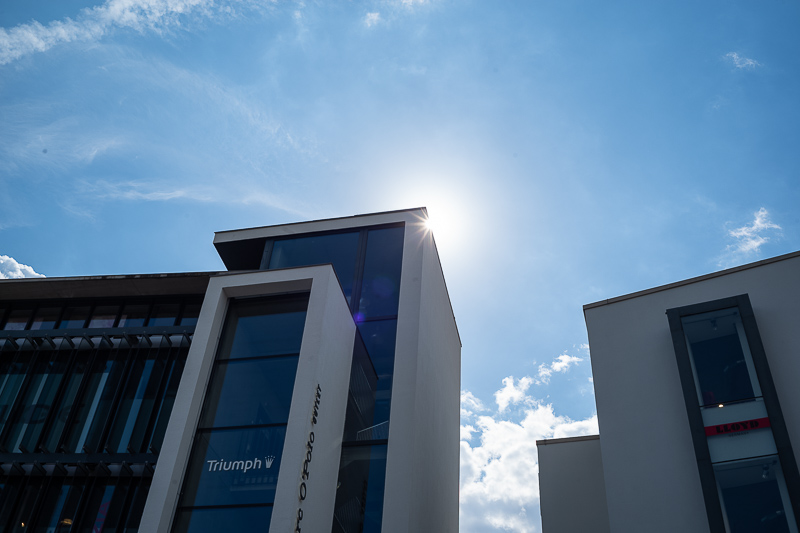
The MS-Optics 35mm 1.4 is using 12 rounded aperture blades and it is very rare to encounter sunstars at all.
If you want to learn more about this topic have a look at this article.
Bokeh

In many ways this MS-Optics 35mm 1.4 behaves similar to the MS-Optics 50mm 1.0 ISM here.
At maximum aperture we have to deal with the “overcorrected spherical aberration” type of bokeh that e.g. the Zeiss Loxia/Biogon 35mm 2.0 is famous for. It leads to noticeable outlining of point light sources.
As we see from the following comparisons this outlining disappears over most of the frame on stopping down to f/2.0, leading to a much calmer bokeh:
I didn’t really enjoy using the MS-Optics 50mm 1.0 ISM when set to f/1.0 but actually quite liked it at f/1.4. The situation is very similar here. When using the MS-Optics 35mm 1.4 Apoqualia at f/1.4 backgrounds can get really messy and distracting and we also have to deal with the lack of contrast due to spherical aberration. I found that out after a short time so I rarely used this lens at apertures wider than f/2.0.


In the Glow/Spherical aberration category you can find a few more f/1.4 samples.
Close distance
As usual we will have a look at the bokeh rendering at different distances, starting with close focus scenarios:




For a rather simple optical design without floating elements the performance is quite decent close to the minimum focus distance, this adds to the subject separation and impression of depth.
Mid distance




I was quite surprised by the performance at mid distances. Sure with foliage in the background the corner areas look a bit busier, but even away from the center sharpness and contrast are good at f/2.0.
Long distance
Now with the MS-Optics lenses I am always a bit concerned how they will perform at longer distances because of field curvature. The MS-Optical 50mm 1.1 Sonnetar has a bit of an issue with this field curvature as it will make the corners pop into focus even though you actually focused on something much closer. Luckily – as was also the case for the 50mm 1.0 ISM – this 35mm 1.4 does not share this issue.
I was pleasantly surprised by the look of the near full body portrait shots:



As always: use the sample images provided to see if you like the look or not. That is ultimately what is important with a lens like this.
Chromatic Aberrations
lateral
Lateral CA are so well corrected, I didn’t find any in my pictures. Neither when shooting foliage against the sun nor shooting cityscapes with white window frames close to the borders.
longitudinal
One area many (but not all) of the MS-Optics lenses pleasantly surprised me is the correction of longitudinal CA. And after all: you can find “Apo” in this lens’ name. Is it deserved?
Leica M10 | MS-Optics 35mm 1.4 | f/1.4
There is only minimal outlining in the out of focus areas visible. Not sure I would call this Apo, but most manufacturers would and it is a very good performance here. After all, just think of lenses like the Sony FE 35mm 1.4 ZA that failed miserably in this category.
Leica M10 | MS-Optics 35mm 1.4 | f/1.4
When it comes to purple fringing the performance is just as remarkable, there are only traces of outlining visible.
Alternatives
I reviewed plenty of 35mm (M-mount) lenses here. If you are looking for something less exotic the Voigtlander VM 35mm 1.2 III comes to mind. It is even faster and as compact as you can make a 35mm f/1.2 with such optical capabilities.
If you want something with a less “polished” look but as fast and small as possible the Voigtländer VM 35mm 1.4 II might be an option. I reviewed the E-mount version which has the same character as the M-mount one.
Other notable 35mm M-mount lenses are the Voigtlander VM 35mm 1.7 (still the best allround option imho), or the Zeiss ZM 35mm 1.4 (very good sharpness in an f/1.4 lens but big and heavy).
If money is not an issue there is of course also the Leica 35mm 1.4 FLE.
If you ended up here by accident and you want to have a general overview over the 35mm E-mount lenses have a look at our rather comprehensive guide on 35mm lenses for Sony FE cameras.
Conclusion
good
|
average
|
not good
|
When it comes to the MS-Optics lenses I am never really sure what to expect. This is also the reason I like reviewing these lenses. Some are deeply flawed – at least from my point of view – so I don’t particularly enjoy using them (e.g. the Sonnetar 50mm 1.1 because of very bad field curvature). Some have a few notable flaws, but still perform very well for a certain kind of task (e.g. the 50mm 1.0 ISM that has black corners stopped down but gives a very cool look at f/1.4). And then some are just very good lenses (e.g. the 135mm 2.4 Aporis) that don’t need to hide from the competition at all.
After having used and reviewed around 20 different 35mm lenses my expectations for a 6 element 35mm f/1.4 lens – coming in at 85g – were somewhat dampened. But after using this MS-Optics 35mm 1.4 for a few weeks I am happy to report that I see it in the last category and even ended up buying it from the reader who provided it for this review (thanks for this opportunity again!).
That being said, of course this is not a flawless lens. The look at f/1.4, I don’t particularly enjoy it. The handling surely takes some getting used to and with strong light sources you need to be careful as well. Coma at wide apertures is very high, so better not think of using this lens for some fancy astrophotography.
I have access to the very best fast 35mm lenses (Laowa 35mm 0.95, Sigma 35mm 1.2 Art and Voigtländer VM 35mm 1.2 III) because 35mm is one of my preferred focal lengths. Yet I am sure this MS-Optics 35mm 1.4 Apoqualia will see regular use, as it is the smallest and least obstrusive fast 35mm lens and I will bring it to places where I wouldn’t carry one of the bigger ones.
These days you can only find this lens used on ebay.com (affiliate link). New it was around $1000, but it has become a bit of a collector’s item, so prices vary a lot
Further Sample Images


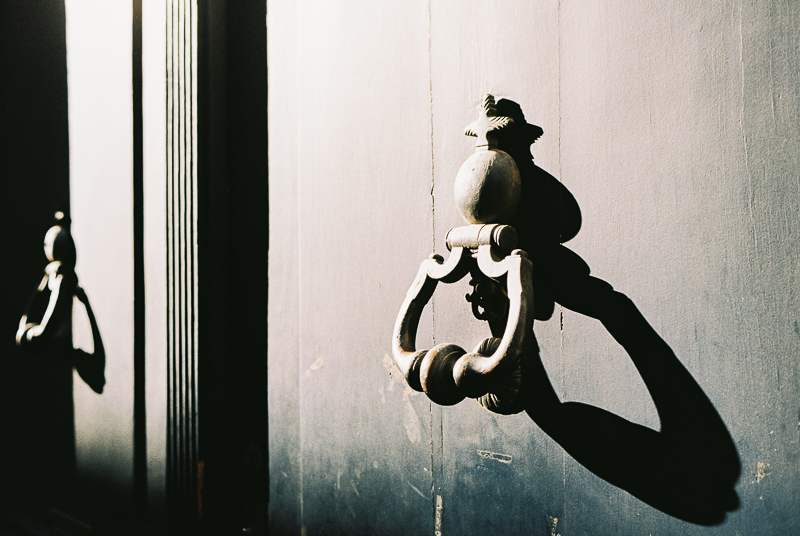

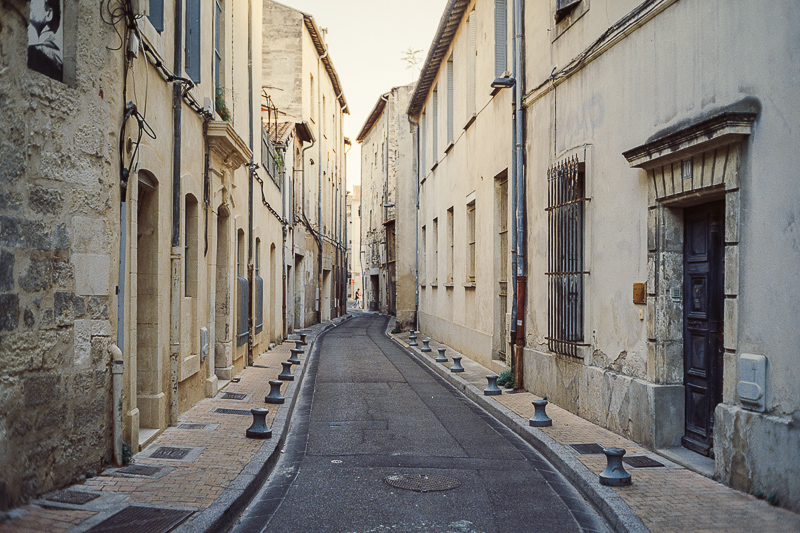












You can find most of the sample images in full resolution here.
Further Reading
- Sony FE lenses: Our comprehensive and independent guide
- Guide to the best 85-135mm Portrait Lenses for Sony a7 series
- Review: Sigma 35mm 1.2 Art DG DN
- Review: Sony FE 24mm 1.4 GM
Support Us
Did you find this article useful or just liked reading it? Treat us to a coffee!
![]()
![]()
![]() via Paypal
via Paypal
This site contains affiliate links. If you make a purchase using any of the links marked as affiliate links, I may receive a small commission at no additional cost to you. This helps support the creation of future content.
Latest posts by BastianK (see all)
- Vivo X200 Ultra – The Death of the compact Camera - June 29, 2025
- Review: Laowa 12mm 2.8 AF - June 26, 2025
- Review: Nikon AF-S 35mm 1.8G - June 21, 2025


















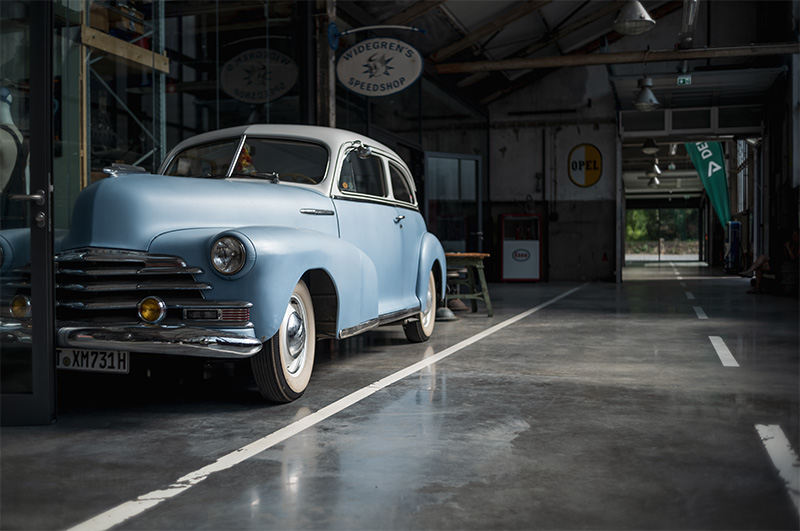

































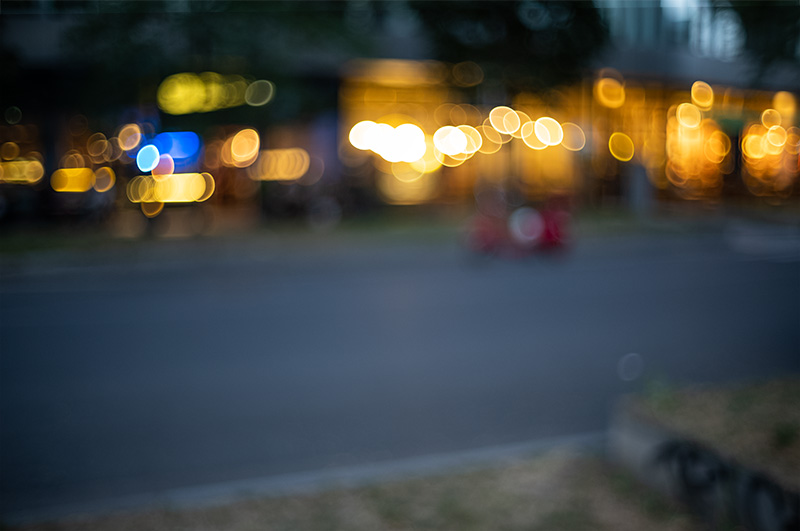






The rendering on this is spectacular in my opinion! Wow! I certainly agree that the bokeh and sharpness at f/1.4 leaves something to be desire, but by f/2 things look just wonderful. It seems to perform rather well on Sony too, which is always nice with M-mount lenses.
I can see some similarities here with my CV40. At f/1.2 it can be used but you need to take the ‘penalties’ into account, but by f/2 it’s a fantastic lens with sharp rendering that only improves as you stop down further. If you’re okay with those considerations I feel like a lens like this is great.
Miyazaki worked some magic on this.
Hello Bastian,
Thank you very much for this review. I am one the few owners of this little gem here in Germany and I agree completly with your conclusions and results. For some funny reasons I bought mine in France, too…
I think that this the best wideangle lens from Mr. Myazaki so far. I really enjoy using this lens as often as possible. And I have many good 35mm lenses for alternative usage.
Considering its rarity and its qualities, the price tag is more than ok. I think your review will raise the price tags, again.
Best regads and have fun with this lens,
Christian
I see many rereleaes of MS-Optics lenses lately, like the 135mm 2.4 I already told you about.
Thereofe I hope we will also see a rerelease of this 35mm 1.4 lens, as it will help to keep the prices at reasonable levels.
It reminds me a lot on the Voigtländer Nokton 35 f1.4 Classic! The rendering changes in the same way at 2.0.
I’m actually surprised you like this lens as much as you do because you didn’t seem quite as happy with the Voigtlander 1.4/35 classic and they both have a lot of trade offs
The Classic is 3 times the weight/size and optically worse.
Not exactly an engineering achievement.
Hey Bastian,
thank you for this very well done review. This lens shows a remarkable performance for its size — especially from F2.0 onwards.
The performance on the M10 shows signs of astigmatism, I guess, as the radial and tangential sharpness differ a lot. The softness at F1.4 on the α7RII is way more even and more predictable — due to undercorrected spherical aberration.
It would be interesting to see if the coma correction would seem different on the α7RII as well. I guess those two aberrations (astigmatism and coma) will be hard to separate and based on the images in this review I would expect a better overall performance on the α7RII.
The suppression of CAs on the other hand is really impressive for the specs and general performance of this lens.
What I also like in this lens is the fact that cat eyes are not a problem despite the high optical vignetting as the shape of the light circles changes a lot towards the corners keeping them more or less round. The downside is the change from relatively even lit circles to smaller circles with strong outlining. But in actual shots this behavior seems rather unobtrusive.
Considering the specs and real world performance this is a very nice little lens.
Hello Bastian,
thank you for this fascinating and also informativ review. Those kind of lenses drew me 2014 to Sony. (Manual) Lenses with character that work with a full frame mirrorless camera.
For me and my special interest you are still on the right track.
Every review by you is a pleasure and I’m still tempted to try the presented items on my own. Although I have already far too much lenses in my cabinets.
Thanks a lot.
Dan
Hi Dan,
I am glad to hear there are people like you that enjoy reviews like this.
It will not come as a surprise that these kind of reviews generate next to no money,
so if no one was reading – and enjoying – them I would definitely have to question
my time investment in writing them 🙂
Best regards
Bastian
+1 I really enjoy reviews of unusual lenses like this.
What a joy this lens is.
Thankyou for your loving review of it.
You are welcome 🙂
I really like the look of this Apoqualia 35mm f1.4 and just collect a copy. It has very severe focus calibration and focus shift, at f1.4 it is back focus until f4 depth of field can cover. The aperture ring also feel very flimsy especially adjusting on the f1.4 end. It it difficult to re-calibrate this lens ? I like the lens though, so want to make it work on my Leica Body.